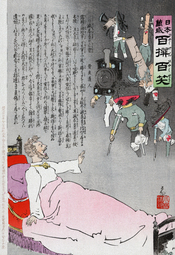The period of 1890-1917 was considered as a turbulent period in the history of Russia. There were three circumstances led to revolutionary unrest in Russia in 1905, namely, the Witte system of industrial expansion, the political groups demanding change in Russia and Russo-Japanese War. These three causes all played a significant role in leading Russia to the Revolution of 1905.
Firstly, the Witte system of rapid industrial expansion ultimately increased taxes on the peasantry, which produced widespread famine in farming area and led to a growth of 'revolutionary consciousness' in the rural area and food riots became commonplace and agitated the social stability. Sergei Witte was appointed by Tsar Alexander III as minister of finance in 1892. During the early rule of Tsar Nicholas II, who became tsar in 1894, he refused to introduce education for the mass of the population in fear that they would become revolutionary agitators.
This attitude ensured Russian economic and political development stagnated. However, in nineteenth century, there was a major industrial development swept across most of Europe, but Russia refused to follow it. Witte believed that if Russia wanted to remain as a major European power, it would need to have a rapid industrial development. In 1900, there were 269 foreign companies operating in Russia partially due to the encouragement of Witte. But only 3 million people were employed in industry, the majority of the people was still in the rural area and relied on agriculture. Furthermore, because of the whole industrial process in Russia was planned and executed by the state, it was the government that owed at lot of overseas debts. The government's debt could only paid by the tax payers, which led to an increase in taxation on the peasantry. Peasants were forced to sell more of their products in...


